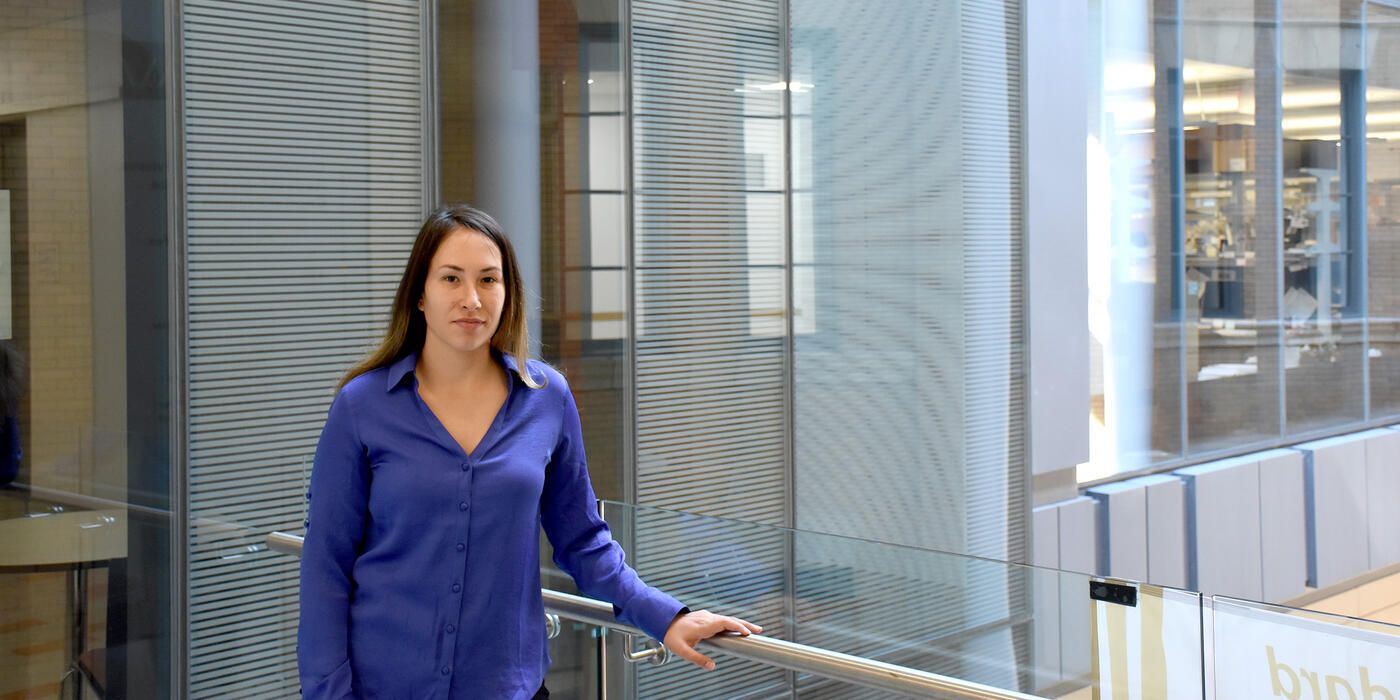Motivated By the Hard Questions in Cancer Research, Noam Auslander, Ph.D., Forges New Paths in Computational Biology
Many people unwind in front of the television after a long day. But Noam Auslander, Ph.D., who joined The Wistar Institute Cancer Center in June as an assistant professor, often spends the evening glued to the screen of her MacBook Pro laptop instead, looking for new insights into how tumors progress and cause disease.
“Sometimes I enjoy my work so much that it is my hobby,” Noam said. The most exciting moments are when, by using innovative algorithms that she builds, she starts to see patterns emerge from a data set that hint at an answer to one of her questions. The question she’s beginning to explore at Wistar is complicated — why some tumors metastasize while others do not, but Noam thinks enough data may be available, from the growing number of cancer patients getting genetic testing, to tackle it.
Joining the Community
Noam gravitated to Wistar because of its small environment, quite a contrast from the sprawling National Institutes of Health where she did her postdoctoral research. She felt Wistar would be the perfect place to foster opportunities to work with colleagues. “My work is dependent on collaborations,” Noam said. As a computational lab, she relies on data sets, and although many are publicly available, data that her colleagues have collected, both from patient samples and lab experiments, could greatly enhance her studies.
Collaborating with labs that conduct experiments, such as in cell lines and mice, is also critical for Noam to be able to test, and hopefully validate, what her algorithms show her in biological systems that mimic cancer processes. During her postdoc, for example, Noam and colleagues found that certain types of cancers harbor either high number of genetic mutations or aneuploidy, which is an abnormal number of chromosomes, but never both. It was a finding ripe to explore in cells, as a separate research group did, to identify possible new treatment strategies for aneuploidy cancer cells, which are particularly untreatable.
Bringing Together Computers and Biology
Growing up in Israel, Noam got a head start in computers. She was only 12 when she took her first elective course in the subject, like many of her peers. By the time Noam finished high school, she had a strong enough foundation in coding that she focused on computers during her mandatory two-year military service. But the work nearly zapped her passion. “It’s nice when you’re learning something in the beginning, but then you’re just doing the same thing over and over again,” Noam said.
Fortunately, Noam sought the advice of a friend who was getting his M.D.-Ph.D. Although Noam’s father was hoping she would follow that path and become a medical doctor, her friend listened to her interests — which included biology but not working with patients! — and instead suggested she combine computer science and biology. It was a revelation to Noam, and she headed into a dual degree at Tel Aviv University. The first three years were a slog, as computer science and biology were taught separately, unlike at many schools where they are melded into some type of bioinformatics program, and it was hard to see how the two could fit together. But Noam stuck it out and she was rewarded with the joy of finally learning how to apply algorithms to answer biological questions.
During the years at university, and then carrying out her Ph.D. at the University of Maryland and postdoc at NIH, Noam has witnessed a coming of age of the application of algorithms and artificial intelligence (AI) in biomedical research. “In some aspects of cancer research, it is on the verge, like in radiology,” Noam said. For example, AI can now be used clinically to analyze images to detect certain tumor types.
However, in the areas that Noam studies, genomics and omics data in general, she explained that AI has a lot of room for improvement, in accumulating sufficient data sets, in determining how to best represent the biological language of DNA, RNA and protein sequences in algorithms, and in making the processes of machine learning models understandable to clinicians who may one day rely on them to make treatment decisions. Noam hopes to help overcome some of these challenges, such as by creating algorithms that rely on more interpretable methods.
As she builds her lab at Wistar, Noam will set her sights on another pillar of Wistar’s research: infectious disease. She plans to use a method she developed during her postdoc to identify bacterial viruses, or bacteriophages, to look for new viruses in tumor cells. She suspects that there are many unidentified viruses out there and some may be present in cancer cells, which could either spur cancer progression or serve as a biomarkers of disease. “The original bacteriophage project was easier, but this is more interesting. It is a stepwise process to get there,” Noam said.
Already at Home
Noam will welcome the first postdoc and technician into her group this fall. They will work at stations in the lab with their own laptops — and the space will soon look like all the labs Noam has worked in over the years.
In her own office, Noam already feels settled in at her desk. The view from her windows is filled with lush trees. But as soon as those trees lose their leaves and it becomes winter, Noam looks forward to embarking on getaways for her second favorite activities after science: skiing and snowboarding. That is, if she can pull herself away from her laptop.
Written by Carina Storrs, Ph.D.


